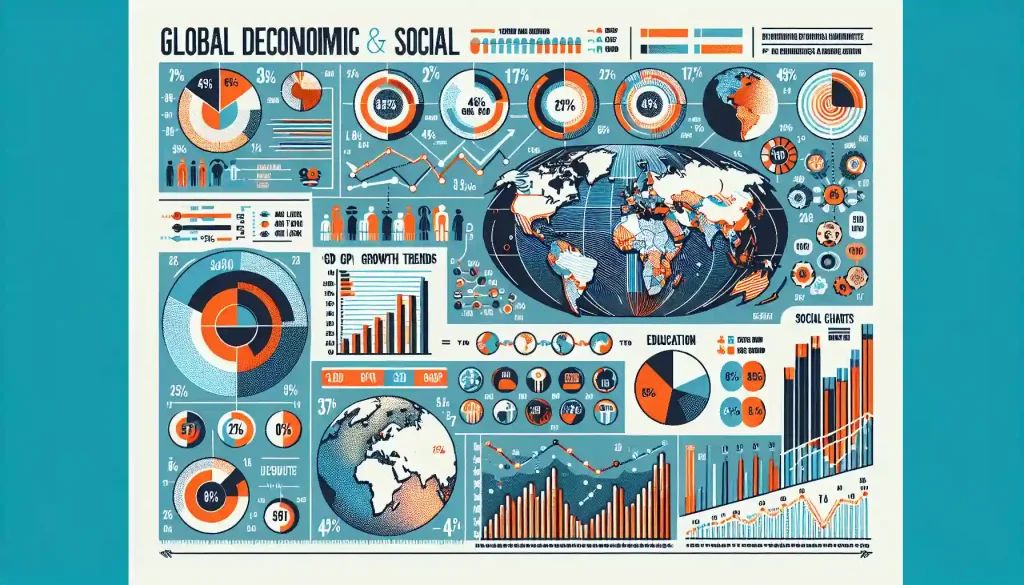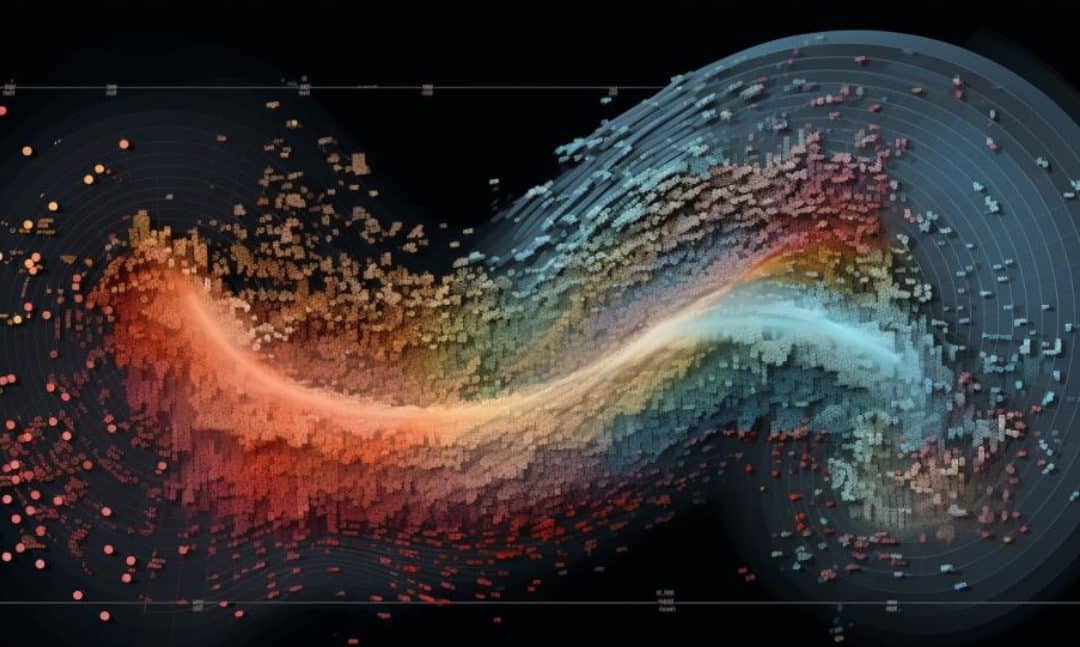Are you looking for free, high-quality datasets to analyze and play around with?
Data analysis is an exciting and ever-evolving field; you need interesting datasets to keep up with it.
Free datasets refer to data collections available for public use at no cost. Anyone can access and use them for various purposes, including research, analysis, and learning.
These datasets can cover a wide range of topics, from social and economic data to scientific and environmental data.
With the increasing availability of free datasets, individuals and organizations can leverage them to gain insights and make data-driven decisions.
However, finding free, high-quality datasets that are interesting to work with and provide valuable insights is not always easy.
In this article, we’ll explore the top 10 free datasets you can use for your analysis projects and data-driven solutions.
This list features diverse datasets covering fields like economics, finance, public health, energy, and more.
Let’s start by exploring the songs dataset, which is perfect for music enthusiasts and aficionados alike.
1. Song Dataset

Music is a powerful language understood and used by many. The music dataset provides detailed information about one million songs, including musical features and lyrics.
This large dataset can be used to explore and discover patterns in music styles, song characteristics, and more.
Key Attributes
Metadata: Artist name, song title, release year, and song length.
Lyrics: Full text of the song lyrics.
Music Features: Loudness, tempo, time signature, and more.
You can use this dataset to develop a music recommendation system, classify music genres, or conduct text analysis on song lyrics. This dataset is excellent for educational purposes and understanding music preferences across regions and periods.
The Million Song Dataset is available for free download in HDF5 format. You can use this link to access the dataset. Also, it is available for streaming to the Amazon Web Services (AWS).
Now, let’s move on to a repository that’s a treasure trove for machine learning enthusiasts.
2. UCI Machine Learning Repository

This dataset repository provides a wide array of publicly available data tailored for machine learning applications.
Whether you’re into anomaly detection, medical diagnostics, or exploring new datasets, the UCI ML Repository is a goldmine for diverse datasets.
Key Attributes
Diversity: 400+ datasets with varying subject matters and data formats.
Well Curated: Each dataset is well-described, enabling easy understanding and application.
You can use this dataset repository to enhance your data science skills by practicing real-world problems.
With background knowledge of diverse datasets, you’ll be more skilled at making informed decisions and generating valuable insights.
You can access the UCI Machine Learning datasets by visiting their website. They provide many datasets on topics like economics, music, and health.
The website includes information about each dataset, the types of attributes, how they are formatted, and possible applications for each dataset.
Next, we explore a dataset that gives insights into global trends.
3. World Bank Data

As a global financial institution, the World Bank has accumulated vast amounts of data that can illuminate global economic and social trends.
This interesting dataset contains a rich array of global and country-specific indicators that cover everything from demographics to economic growth.
Key Attributes
Data coverage: 217 countries and 29 country groups.
Period: Over 50 years of historical data.
Data Types: Country in focus, indicator, time series.
Indicator Scope: Covers various economic, social, and environmental indicators like poverty headcount, CO2 emissions, and energy use.
You can use this dataset to assess the impact of economic policies, study income inequality trends, and compare country-specific performance.
It’s also a valuable resource for educators, students, and researchers in economics, global development, and public policy.
You can access the World Bank data through the World Bank’s website and other statistical data repositories.
The website provides raw data and ready-to-use tables, making it an excellent resource for those new to data science.
Let’s shift gears to a platform offering many publicly available datasets.
4. Google Cloud Public Datasets

Google Cloud Public Datasets offers a wide array of public data. The dataset is an excellent source for your exploratory data analysis needs, offering general weather, finance, and healthcare datasets.
Key Attributes
Diverse Data: Wide array of public datasets like weather, finance, and healthcare.
Data Volume: Large datasets from 100GB to 40TB in size.
Access: Accessible through APIs or web interfaces.
You can use these datasets to complement your analytical projects and uncover valuable insights to drive effective decision-making.
You can access the Google Public Datasets by visiting the GCP Public Datasets page.
You could use BigQuery to analyze public data in a web interface or the command-line client. Furthermore, you can access shared data from Cloud Storage by requesting an HTTP to the public data location URL.
Moving on, let’s delve into a dataset crucial for current times.
5. COVID-19 Data Visualization

Staying informed is crucial in a data-driven society. The dataset provides live, up-to-the-minute statistics on COVID-19 cases, deaths, and recoveries, allowing you to build insightful visualizations or predictive models to anticipate the disease’s movement.
Key Attributes
Real-time updates: Continuously updated data for global and country-specific cases.
Comprehensive Coverage: Cases, deaths, and recoveries data for most countries.
Granularity: Breakdown of active, recovered, and deceased cases, as well as testing data.
You can use this dataset for COVID-19 data analytics and to develop predictive models that can potentially predict outbreaks and aid in healthcare resource planning.
You can access the Covid-19 data by visiting this website.
This website provides various data visualization tools, allowing you to see specific countries, global data, and trends over time.
Next, let’s see how to tap into the pulse of the internet’s search trends.
6. Google Trends Data

The Google Trends dataset provides data on what the world is searching for. This dataset contains valuable information from multiple perspectives, such as search volumes, related queries, regional interests, etc.
It is an excellent source for marketing and web performance analytics.
Key Attributes
Comprehensive: Covers over 100 languages in 130+ countries.
Granularity: Daily, weekly, monthly, and yearly data.
Insights: Valuable insights into user search behavior and trends.
You can use this dataset for marketing analytics to understand user interests, monitor brand awareness, and assess the impact of marketing campaigns.
Google Trends data can be accessed by visiting the Google Trends website.
Also, Google Cloud BigQuery is another tool you can use to access this dataset.
BigQuery is a fully managed, serverless data warehouse that handles petabytes of data. It allows you to run fast, SQL-like queries against multi-terabyte datasets in milliseconds.
Now, let’s look at a goldmine of data for financial analysts.
7. Financial Market Data

The financial market dataset includes numerous public equity datasets from Alpha Vantage. This dataset is a treasure trove for anyone interested in financial markets as it has real-time and historical data on various financial instruments such as stocks, ETFs, and cryptocurrencies.
Key Attributes
Global Coverage: Data from over 50 stock exchanges.
High-frequency Data: Tick-level data for high-frequency trading strategies.
Diverse Asset Class Coverage: Historical and real-time data for stocks, ETFs, and cryptocurrency.
Multiple Charting Options: Provides both basic and advanced charting options for visualization.
You can use this dataset to develop trading algorithms, gain insights, and make informed investment decisions. It is also a great tool to conduct advanced financial market research.
You can access Alpha Vantage’s financial data by visiting their website.
The website allows you to search for a specific stock or index and provides real-time and historical data.
Next, let’s navigate the complex world of global economics.
8. IMF Economic Data

The International Monetary Fund (IMF) provides a goldmine of economic data covering various economic indicators worldwide.
This dataset is not just limited to one country; it offers country-specific economic data worldwide.
Key Attributes
Up-to-date: Offers real-time data updates for recent economic indicators.
Covers a Range: Encompasses various economic indicators like GDP, inflation, and interest rates.
Historical View: Provides historical data for long-term economic research.
The IMF dataset can be used to monitor global economic trends, analyze economic growth, and compare macroeconomic indicators for different countries.
You can access the IMF Economic Data through their website.
They also have a data portal that allows you to search for specific indicators and download the data in various formats.
Moving forward, let’s explore a dataset key to understanding energy trends.
9. Energy Consumption, Production and Emissions

Understanding global energy trends is indispensable with the worldwide push for renewable energy sources and prioritizing minimizing greenhouse gas emissions. This dataset offers data on worldwide energy consumption, production, and CO2 emissions.
Key Attributes
Scope: Covers 217 countries and explains complex energy-related processes.
Comprehensive Data: Includes energy consumption, production, and CO2 emissions data from 1980 to 2018.
Different Energy Sources: Break down data by energy sources such as oil, coal, natural gas, and renewable energy.
Customizable: Allows users to combine variables and enable cross-utilization of different datasets.
You can use this dataset to develop insightful energy consumption models to drive impactful decisions on renewable energy, environmental policies, and more.
Finally, let’s dive into the dynamic world of social media data.
10. Twitter Data

Twitter is an excellent real-time data source, containing tweet, user, and network information. This dataset is ideal for social and sentiment analysis and extracting data for other social media-related projects.
Key Attributes
Real-time: Offers up-to-date and real-time data.
Comprehensive Content Access: Includes tweet text, user information, and a wide range of Twitter API data.
Convenient: Available via the Twitter API and other authorized data providers.
Personalized Experience: Information can be fine-tuned to match individual preferences and needs.
You can access the Twitter dataset using the Twitter API and other authorized data providers. The Twitter API is free for personal use but requires registration and authentication for commercial usage.
After exploring these diverse datasets, let’s wrap up with some final thoughts on how they can empower your data analysis journey.
Final Thoughts

Interacting with and interpreting datasets is a cornerstone activity for data scientists. These ten free datasets provide a wealth of information.
Make sure you use the datasets that suit your project best; even consider combining datasets to enrich your analyzing potential, allowing you to reach more robust conclusions.
By dedicating time to working with the datasets that interest you, you get closer to mastering data analysis.
If you want to see how to use ChatGPT for data analysis, check out this excellent video below:
Frequently Asked Questions
What is a real-world dataset?
A real-world dataset is a collection of data observed or measured in a natural setting, as opposed to a dataset artificially generated for a specific purpose.
Real-world datasets are often used in data science and machine learning to develop and test models, as they represent the data the models will encounter in practice.
What are some examples of real-world datasets?
Real-world datasets can encompass a wide range of subjects and domains. Examples include weather data, financial market data, healthcare records, social media activity, etc.
These datasets often contain large amounts of unstructured data, such as text or images, and may require data cleaning and preprocessing before being analyzed.
Where can I find free datasets?
There are many online resources for finding datasets. Public data repositories, such as the UCI Machine Learning Repository and the Google Cloud Public Datasets, offer a wide variety of freely available datasets.
Additionally, many organizations and companies make their data available to the public for research and analysis purposes.
How can I use real-world datasets in my data analysis projects?
To use a real-world dataset, you first need to download and import the data into a data analyzing tool, such as Python with the Pandas library or R with the tidyverse package.
Once the data is imported, you can explore and analyze it using various techniques, such as data visualization, statistical analysis, or machine learning.
How do I ensure the ethical use of real-world datasets?
Ethical use involves respecting data privacy, avoiding biases in data analysis, and using the data in a way consistent with the purpose for which it was collected.
It’s also important to consider the impact of your research on individuals or communities represented in the data.
What are some formats in which datasets are available?
Standard formats include CSV (Comma-Separated Values), JSON (JavaScript Object Notation), XML (eXtensible Markup Language), and Excel files.
Some larger datasets might be in databases like SQL or specialized formats for big data like Parquet.
Can I contribute to or create a public dataset?
Many platforms allow users to contribute to existing datasets or publish their own. This is common in open-source projects and community-driven platforms like GitHub or Kaggle.
Ensure your dataset adheres to privacy and legal standards before sharing.
How do data scientists typically use datasets in their work?
Data scientists often use datasets for various purposes, including training and testing machine learning models, conducting research to gain insights, and developing data-driven solutions for real-world problems.
These datasets provide a valuable resource for honing data science skills, experimenting with new techniques, and conducting academic research or personal projects.
Why is Google Dataset Search considered a go-to resource for finding free public datasets?
Google Dataset Search has emerged as a leading resource for discovering free public datasets due to its vast index and user-friendly search capabilities.
It aggregates data from various repositories and websites, making it easier for users to find datasets across multiple disciplines and industries.













